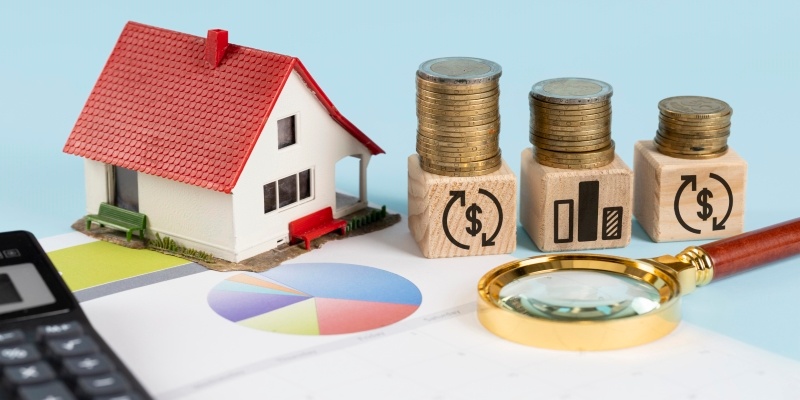In accounting and finance, asset valuation plays a central role in financial reporting and decision-making. Two key terms that often come up are "carrying value" and "fair value." These terms refer to different methods used to determine an asset's worth, but they serve very distinct purposes.
Understanding how these valuation methods differ can provide clarity when reading financial statements or making investment decisions. While carrying value is tied to historical cost and depreciation, fair value reflects the current market situation. In this article, we'll explore the meaning, calculation, and significance of both.
What is Carrying Value?
Carrying value, or book value, represents an asset's worth on a company's balance sheet. Initially equal to the asset's purchase price, it declines over time due to depreciation, amortization, or impairment. This adjustment reflects the asset's updated accounting value.
For instance, if a company buys equipment for $100,000 and uses straight-line depreciation over ten years, the carrying value after five years would be $50,000, representing the asset's adjusted worth. This value is crucial for internal reporting and tax purposes, providing insight into the company's financial position.
Depreciations Impact on Carrying Value
Depreciation significantly influences carrying value by allocating the cost of an asset over its useful life, reflecting the gradual decrease in value due to wear and tear. Common methods for calculating depreciation include straight-line and accelerated depreciation.
Straight-line depreciation evenly distributes the initial cost across the asset's lifespan, simplifying reporting. While carrying value provides a useful accounting figure, it may not represent the asset's current market value, as market conditions can lead to significant discrepancies between book value and fair value.
What is Fair Value?
Fair value represents the price at which an asset could be sold in an active market between willing buyers and sellers. It reflects current supply and demand dynamics as well as broader economic conditions. Unlike carrying value, which adjusts the original purchase price for depreciation, fair value relies on real-time market data.
For example, a piece of real estate might have a decreased carrying value due to depreciation. Still, if the market appreciates, its fair value could significantly increase, illustrating its current market worth more accurately than the carrying value does.
Depreciations Impact on Fair Value
Depreciation indirectly affects fair value by influencing market perceptions and demand for an asset. While carrying value decreases systematically over time, fair value reflects current market conditions, which may not align with depreciation trends.
For instance, even as physical assets depreciate, their market value can increase if demand rises or economic conditions improve. Thus, while depreciation signals aging, fair value encompasses broader factors, making it essential to consider both metrics when assessing an asset's worth.

Key Differences Between Carrying Value and Fair Value
The most obvious difference between carrying value and fair value lies in their underlying basis. Carrying value is rooted in historical cost, adjusted for factors like depreciation and amortization, whereas fair value is based on current market conditions.
Timing and Volatility:
Carrying value remains stable and predictable, as it only changes through depreciation or amortization, reflecting a steady decline in value over time. In contrast, fair value is dynamic and fluctuates according to market conditions. This volatility means that fair value can vary significantly from one financial report to another, influenced by real-time economic factors and market demand.
Purpose:
The primary purpose of carrying value is for internal accounting, enabling businesses to track asset depreciation and meet compliance requirements under financial reporting standards like GAAP or IFRS. On the other hand, fair value serves investors by reflecting the potential selling price of an asset in the current market. This relevance makes fair value crucial during investment decisions and financial transactions.
Asset Classes:
Carrying value typically applies to long-term tangible assets, such as machinery, vehicles, and buildings, as these assets have predictable depreciation patterns. Fair value encompasses a wider range of asset types, including stocks, bonds, real estate, and intangible assets like intellectual property. Its application extends to any asset that can be actively traded or appraised in a market environment.
Measurement Uncertainty:
Determining carrying value is relatively straightforward, relying on established formulas and predictable depreciation methods, which minimizes uncertainty in asset valuation. Conversely, establishing fair value can be complex, particularly for assets without active markets. In these cases, valuation techniques such as discounted cash flows or market comparables are necessary, introducing a degree of uncertainty that does not typically apply to carrying value calculations.

Practical Applications of Carrying Value and Fair Value
Carrying value is heavily utilized for tax purposes. The depreciation expenses that reduce an assets carrying value can provide tax relief, as companies are allowed to deduct the depreciation of assets over time. It also plays a key role in internal financial reporting, allowing a company to keep track of the value of its assets for accounting purposes.
Fair value, on the other hand, is critical in situations where assets need to be valued for sale, merger, or acquisition. Investors frequently rely on fair value to assess whether an asset is over- or under-valued in the market. For financial instruments like stocks or bonds, fair value is essential for determining how an asset should be priced in active markets.
Conclusion
Understanding the difference between carrying value and fair value is vital for anyone involved in financial reporting, investment analysis, or asset management. Carrying value represents the historical accounting of an assets worth, while fair value is a more market-based estimate. Both have their uses, but fair value is often the more relevant metric when making decisions about buying, selling, or valuing assets in a fluid market environment.
While carrying value gives a stable, long-term perspective on asset worth, fair value reflects an asset's real-time worth in the marketplace. Depending on the context of the valuation, both measures offer valuable insights for investors and analysts.




